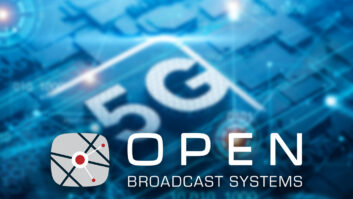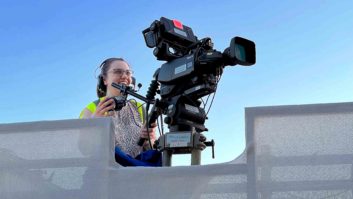There is a lot of talk about broadcasters increasingly moving towards IT-based solutions. The implication is that traditional broadcast manufacturers are being left behind and will be replaced by providers of IT-based solutions and that traditional manufacturers do not have the skills to utilise the potential that IT-based solutions can offer.
My assertion is that this is a serious misinterpretation. Manufacturers have always used the best and latest technology; the change that has occurred over the years is that generic PC storage and networking technology has advanced significantly in terms of price performance and can therefore be utilised to provide solutions for our industry that no longer have to rely on proprietary hardware-based solutions.
Four years ago we anticipated that as our users were migrating from tape-based to file-based workflows, they would need to solve their everyday problems in the file-based domain. We set up the ideals of our company and product philosophy based around building easy-to-use products that were cross-platform and utilised software that was written primarily in-house.
Having spoken to a number of potential key customers we quickly realised that our expert knowledge of broadcast, relevant technology and work practices were the key value-add. If we could implement this knowledge so that the transition to file-based operation was easily achievable, we would have satisfied customers and a viable business plan, based on this allegedly difficult IT-based solution.
So we developed a technology platform that allowed us to open a file, examine its content and report on the state of the file, and then based on a user-defined profile, process the file to fix to the relevant specifications. This is the big picture for our business.
Our initial solution was inspired by the very topical and high profile discussions and implementations of audio loudness. So we chose to build our first product, eFF, to open any media file (MXF, GXF, LXF, QuickTime, WAV, Aiff and RF64), measure the audio and report on it, and if it did not meet the specification, correct it. eFF can be used as a manual tool in an edit suite to perform the measurement and correction one file at a time, or used with watch folders or through an API to provide automated, high volume measurement and correction.
We have been shipping this product successfully for the last two years and have won many prestigious customers. It has been an interesting ride – the challenges associated with file-based processing are far higher than the simple algorithm for measuring and correcting loudness.
It has also led us into dialogue with our customers who have asked us to provide extended solutions for their audio workflows. Early this year we supplied a major broadcaster with an audio workflow solution to allow them to, under MAM control, loudness correct, track map, replicate and encode MXF files for transmission readiness. The source files came in multiple audio layouts and needed different workflows applied to them to make them transmission ready.
So in summary, all we did was use off-the-shelf, readily available IT components and a bit of software that we wrote to solve what is a very real broadcast technology problem.







